It’s hard to believe, but spring is slowly making its way towards Central Oregon. Along with it comes an influx of migrating birds. Some will call Central Oregon their final stop, while others will continue further north. This is often one of the most exciting times of the year for birders. Join in the fun by learning about five birds that migrate to or through Central Oregon in the spring.
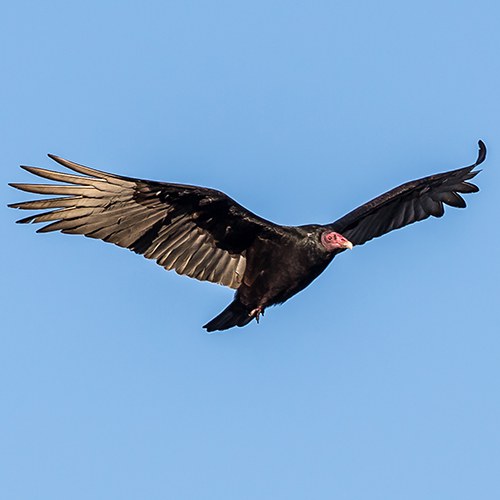
Winter locale: Southeastern US, Mexico, Central America, South America
Cool/Unusual fact: Turkey vultures can digest nearly anything due to their incredibly acidic stomach acid. They can eat carcasses tainted with anthrax, tuberculosis, and rabies without getting sick.
When I see my first turkey vulture of the year, I know that spring has arrived! Noticeable by its soaring wings shaped in a V, plus its naked red head, turkey vultures are common during the warmer months in Central Oregon. While soaring, pay attention to its two-toned wings and long tail. They have a wingspan of 67 inches, so they are most obvious while soaring! Otherwise, they roost in trees or on structures.
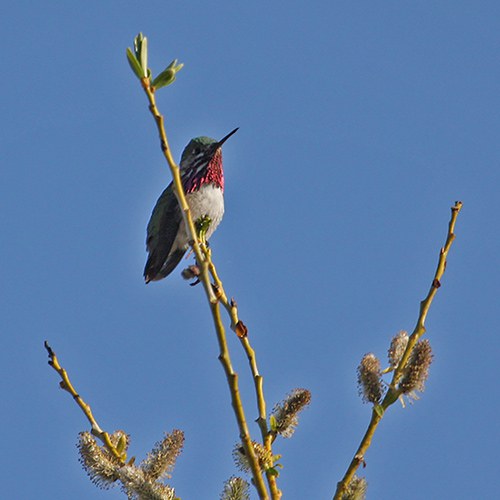
Winter locale: Central and southern Mexico
Cool/Unusual fact: Calliope hummingbirds migrate 5,000 miles each spring and fall! In the spring, they buzz up the Pacific Coast, and in the fall, they return to Mexico by following the Rocky Mountains.
Spring also brings the majority of Central Oregon’s hummingbirds buzzing back into town. Calliope hummingbirds are the smallest bird in the US and weigh about the same amount as a ping pong ball. While they prefer the pine and oak forests of Mexico in the winter, once they return to Central Oregon, you can find them on meadow edges and in creekside vegetation. Male calliope hummingbirds have a streaked rosy throat and a distinctive white stripe across their cheek. Calliope hummingbirds have a wingspan of 4.25 inches.
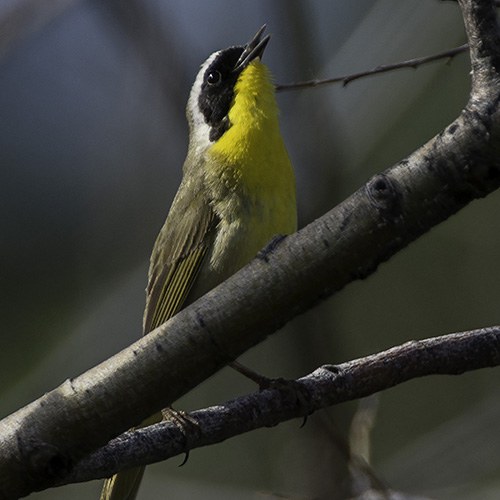
Winter locale: Southern California, southeastern US, Mexico, Central America, and the Caribbean
Cool/Unusual fact: Males typically have one mate during a breeding season. However, females often attract several males, and she may mate with them behind her mate’s back.
Take a look at the common yellowthroat’s black mask! This is the easiest way to identify a male common yellowthroat. They also have a yellow throat (hence their name) with an olive back. Common yellowthroats are quite vocal, with a witchery-witchety-witchety song. You can find common yellowthroats in low, wet areas (like Camp Polk Meadow Preserve near Sisters!).
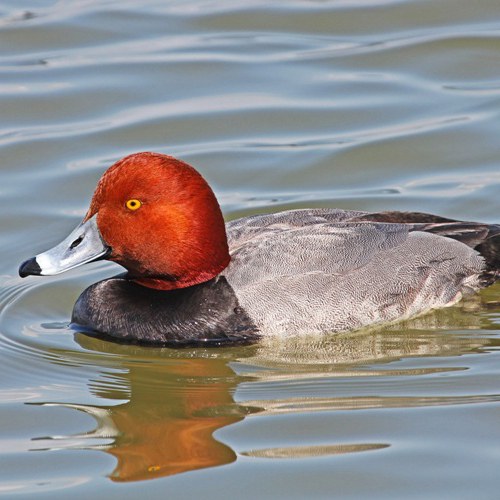
Winter locale: Southern US, Mexico, Cuba, eastern US coast
Cool/Unusual fact: Male redheads perform an incredible “head throw” display when courting. They bend their neck nearly in half until it touches their tail, then snaps their neck forward while giving a loud, catlike mee-ow call.
I bet you can already guess the best way to identify a redhead—by the male’s red head! The males also have a distinctive blue-gray bill, gray body, and dark tail and upper chest. Redheads dive in shallow water for plants to eat. They can be found in lakes and reservoirs. Be sure to make a trip to Prineville’s Crooked River Wetlands Complex (across the river from Ochoco Preserve) to spot a redhead this spring! In fact, this is a great spot for seeing waterfowl during spring migrations.
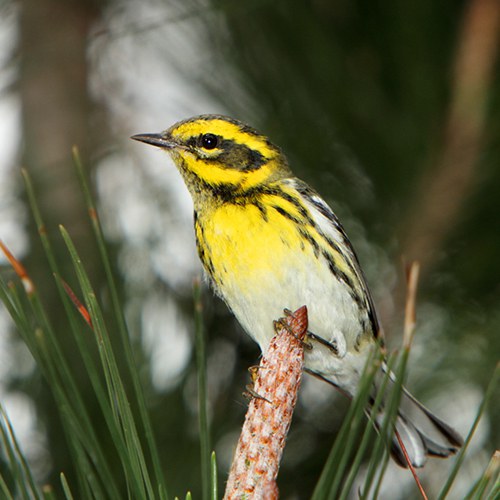
Winter locale: Mexico, Central America, and the US Pacific coast
Cool/Unusual fact: While wintering in Mexico, they feed primarily on the sugar excretions of scale insects, and will defend trees with large quantities of these tasty meals.
Ahh, warblers. A difficult to identify category for the novice birder, but let’s give it a try! Townsend’s warbler males have bright yellow foreparts and streaked flanks. Keep an eye out for their olive cheek to distinguish them from other warblers. They nest high in mature conifer forests, so it might actually be easier to listen for them—Townsend’s warblers sing a rapid series of buzzy notes.
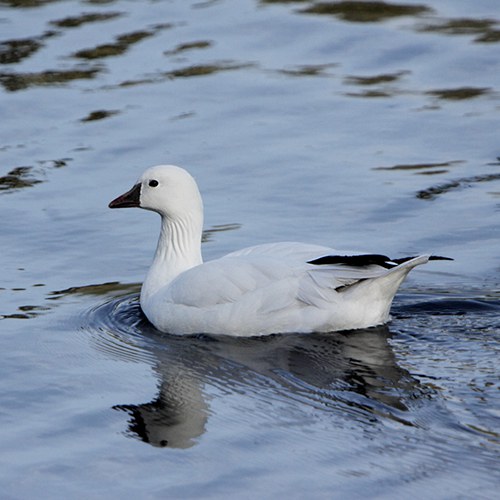
Winter locale: California, New Mexico, Texas, Louisiana, and northern Mexico
Cool/Unusual fact: Arctic-nesting geese, including the Ross’s goose, have changed the plant communities where they nest. Their colonies strip away large areas of plants and, due to this, their colonies can sometimes be seen from space.
This fellow migrates through Central Oregon on its way to the arctic tundra, where they nest and spend the summer. They are often described as a miniature snow goose. However, compared to a snow goose, they have a smaller bill, rounder head, and shorter neck. Ross’s geese are typically white, but there are variations (also known as morphs), including a rare dark morph that causes a black chest, neck, and back feathers. Look for Ross’s goose in reservoirs and marshy areas, including the Crooked River Wetlands Complex in Prineville.
As the temperatures continue to warm, keep an eye on the sky and the willows, as Central Oregon’s migrating birds return.
Sources: The Cornell Lab of Ornithology and The Sibley Field Guide to Birds of Western North America.
Learn more:
- Birding for Beginners
- How to Use Binoculars for Beginners
- Last fall's Wildlife Wanderings, highlighting a few different birds that visited Land Trust Preserves
- Cool Words for Hot Times: Indicator Species


